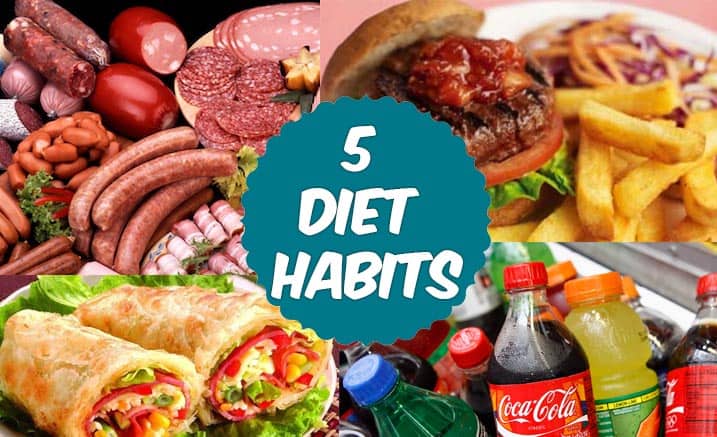Diabetes- know what to eat,what to avoid and prepare a food control plan.know about your insurance coverage and select best insurance plan.

If you have diabetes, what can you eat? what diets are in control of diabetes.know about your insurance coverage etc.
The first thing diabetic patients need to do is to change their eating habits by understanding the nutritional requirements of their body. The idea that replacing rice with wheat and oats is a diet for diabetics is wrong. Rice, wheat, maize, oats, lemongrass, rava and maida all contain starch or carbohydrate. There are some differences in quantity.
People with diabetes should eat a nutrient-dense diet that is low in starch but not high in energy. But if you skip the sweets with a little bit of starch, salt and fat, then you wonder what the food tastes like. But for people with diabetes, food can be nutritious and delicious.
"Best food habit make you better health ".
People with diabetes need to have enough nutrients. A typical Keralite diet, which is high in starch, is very suitable for people with diabetes. About 60-65% of total energy should come from starch, 15-25% from fat, and 15-20% from meat or protein. However, it is important to take a diet high in fiber. The fiber-rich foods include stew, pint, fruit, and uncooked vegetables and salads. Incorporating these foods into your daily diet can alleviate some of the problem of constipation in diabetic patients.
Diabetes and Aging
Usually in the 50- to 60-year age range, body weight and body fat also increase. Later, weight will be reduced. Impairment of taste and sense of smell, difficulty breathing due to problems with the teeth and gums, and nervous system damage in the digestive tract. Therefore, the person with diabetes has a feeling of being stuck in the stomach. Symptoms include hunger, swelling and waking hours after eating. It is best to eat them in small doses several times.
There are three main causes of malnutrition in the elderly
- Lack of energy-intensive diets.
- Meat deficiency and lack of exercise.
- Chemical changes in muscle mass and muscle weakness due to lack of exercise.

Excessive weight loss can increase the severity of many diabetic complications, especially in older people with diabetes. Even underweight people with diabetes may be undernourished. This means that the bones and muscles are damaged while there is too much fat in them. Patients with type-1 diabetes should start with a balanced diet. Adjusting the amount of starch in the food they eat, they should be advised to consume more insulin, consume more homemade food, and avoid processed foods, fast foods, and beverages like cola. Dietary restriction and regular exercise are more important than the use of medications in a diabetic patient. Practice eating small portions of medium size and eating slowly over time.
Best Food Habits and Control Plan Recipes

Incorporating a wide variety of foods into your diet, as well as a variety of colors and flavors, will help keep food from getting bored. It is also beneficial for people with diabetes to skip meals once a day, eat with others whenever possible, and eat dinner at least three hours before bedtime. Eating food in front of a TV or a computer often leads to a need for more. The family gathering at the table is very enjoyable and healthy. The Glycemic Index is a concept that diabetics should be aware of. Starch in different foods does not increase blood sugar levels the same way. Diabetics should take care of this when choosing food. The Glycemic Index is a comparison of blood sugar levels when you eat a certain amount of glucose. It is better to have a glycemic index in the food we eat. Foods that are cooked have a lower glycemic index than fat and meat. The glycemic index is lower than that of artificially produced foods. Glycemic load is a similar concept. Sometimes starch content in foods with high glycemic index is relatively low. Glycemic load is the idea that helps a diabetic to distinguish between good and bad in starch. When these two ideas are combined, we understand. Incorporating whole grains and vegetables into your diet can help prevent excessive blood glucose uptake.
One of the unique features we see in people with diabetes is the high blood glucose level after breakfast. Blood sugar level does not rise even after midday meal. Eat more carbohydrate-rich foods such as sambar, lentils and lentils, which can be avoided to increase blood glucose. The unique diet of Keralites can be described as healthy for a diabetic. It is only necessary to reduce the amount of tubers and rice. It is also essential to include in your daily diet a variety of fruits and vegetables which are not cooked. Our younger generation must be aware of the devastation that fast food culture can bring. The tendency to abandon our unique diet and turn it into a daily diet of wheat, oats and store-bought protein powders is not healthy. Nowadays, it is important to have an awareness of healthy eating habits without being addicted to spicy taste and new foods. It is a myth that all diabetics should be on a regular basis with protein powders and vitamin pills. Their use may be beneficial in diabetic patients who have difficulty eating or eating normal foods due to age. Vitamin D, a substance rich in sunlight, is found to be inadequate in diabetic patients. Studies show that supplementation with vitamin D has some beneficial effects on normal individuals and people with diabetes. But since vitamin D is not good for the body, it is important to have a blood test before taking large doses. Keep in mind that sun exposure to more than 40% of the body's skin after 10 am, 20 to 30 minutes, and 3 pm in the afternoon will give you enough vitamin D without the medication.
Diabetic is covered under insurance?
Understand when insurance companies cover you is it covering diabetes?. Normally most of the insurace are covering pre-existing conditions but may have waiting period like 6 months it will depends on your plan .before choosing insurance plan always compare coverage and benefits by reading Table of Benefits(TOB).